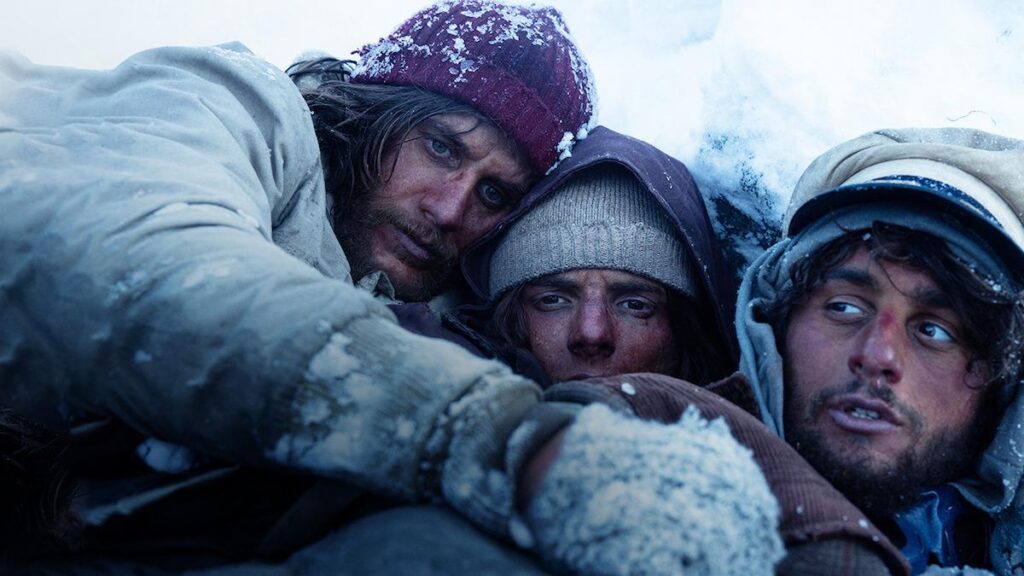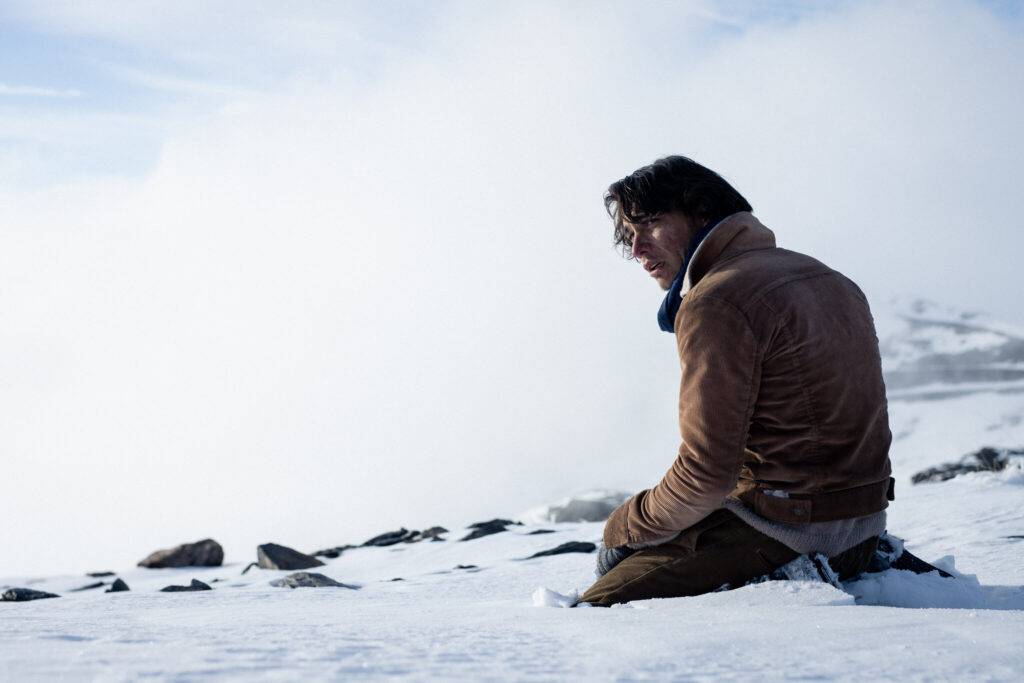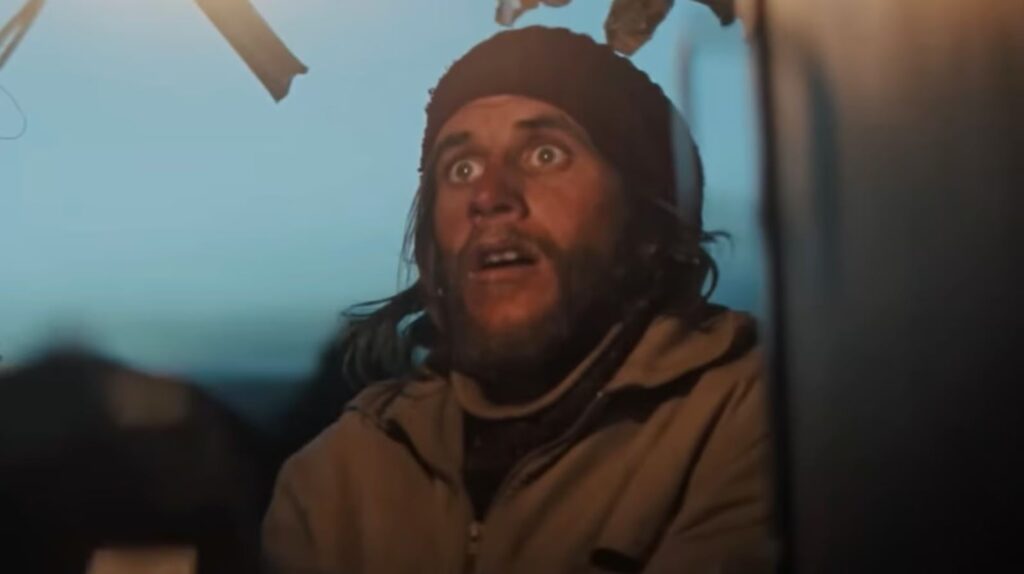
The movies love an impossibly true story—and if you aren’t familiar with the ultimate fate of the passengers of Uruguayan Air Force flight 571, you should probably stop reading now. If you are acquainted with this chilling saga of disaster, despair, and endurance—in which the survivors of a plane crash spent 72 days marooned in the Andes before being rescued—it might be because you’ve seen Alive, the 1993 feature directed by Frank Marshall. That decidedly American production, which was distributed by Disney, starred Ethan Hawke and Josh Hamilton as two of many white dudes cast as Uruguayan rugby players. Now, in a reclamation of sorts, comes Society of the Snow, a more culturally accurate recreation of the 1972 ordeal suffered by the Old Christians rugby team and other unfortunate travelers.
In a way, this operates as an inversion for J.A. Bayona, the Spanish filmmaker whose diverse credits include Jurassic World: Fallen Kingdom and The Orphanage (his first and best), and who previously revisited real-world tragedy and triumph with The Impossible. That movie, inspired by the plight of a Spanish woman during the 2004 Indian Ocean tsunami, made the controversial decision to tell its story primarily through the lens of three white UK actors. Here, Bayona seems to have inoculated himself against any accusations regarding representation; the men who play the ill-fated athletes all hail from Uruguay or Argentina, and none of them possesses a recognizable name that could be leveraged for marketing purposes. Their relative anonymity is in keeping with the picture overall—both for the heartfelt homage it pays to its real-life counterparts, and for the struggle it exhibits when attempting to turn torchbearers of agony into distinct characters.
As if anticipating that challenge, Society of the Snow opens not with the horrific plane crash that triggers the brunt of the film but with something nearly as violent: a rugby match. There are a great many sweaty bodies piled into the scrum, but the three who immediately emerge are Roberto (Matías Recalt), the speedy flanker who escapes with the ball; Nando (Agustín Pardella), the bulky forward who keeps shouting at Roberto to pass; and Marcelo (Diego Vegezzi), the weary captain who is charged with molding this batch of talented and somewhat selfish individuals into a unified team. Later, after the movie has transitioned from green grass to white snow, Bayona periodically flashes back to this sequence, as if Roberto and Nando’s on-field sprinting and bickering might somehow contain the keystone to their actions, even when their enemy is mother nature rather than an opposing squad.

This ill-advised micro-editing betrays Bayona’s greater style, which might be called sincerely manipulative. He has approached this project with respectful, nigh-reverent compassion, and he has resolved to chronicle the team’s tribulation with humanity as well as intensity. Yet because the premise of Society of the Snow is fundamentally static—it mostly involves a group of people not doing anything for multiple months, as the unforgiving climate stymies their every plan—he attempts to freight their misery with strategic artificiality. This is most evident in the character of Numa (Enzo Vogrincic), the good-looking loner who also serves as the movie’s narrator, and whose constant voiceover can’t help but feel like verbal overcompensation for visual inaction.
In fairness, this prevailing stasis is punctuated by moments of breathtaking terror. Yes, Society of the Snow is largely about waiting—for sunrise, for snowmelt, for deliverance—but on the occasions when it depicts particular misfortunes, it is ghoulishly impressive. The early crash may not match the genre’s peak, as it were (that would be Robert Zemeckis’ Flight), but it’s gripping in an unholy kind of way—not least when the aircraft splits in two and a man is sucked out the rear as the fuselage turns into the world’s biggest and most useless toboggan. Later, an avalanche plunges the plane’s inhabitants into darkness, evoking their desperation and suffocation with queasy realism. And the overall staging conveys the sheer enormity of the survivors’ predicament; overhead shots of snow-capped mountains seem to stretch on for eternity, making the characters’ impending death appear inevitable.

It’s a daunting dilemma, one that Bayona imbues with unsettling detail, such as the passengers’ urine turning black. Yet while Society of the Snow adroitly illustrates the variety of practical challenges facing the team—the setup to capture drinking water, the search for batteries to operate a radio, even the construction of a critical sleeping bag—it is oddly light on interpersonal dynamics. The title implies heated and thorny disputes about governance and comportment in the face of devastation and anarchy, but the movie doesn’t really dig into allocations of authority or quarrels about decision-making. Pretty much everyone on screen seems to be a decent guy (there are a few women around whose presence is chiefly ornamental), and while I’m not suggesting that the screenplay (by Bayona and three others, adapting the book by Pablo Vierci) should have manufactured a villain, the lack of antagonism dampens the picture’s energy.
The one area of putative disagreement that does materialize involves that most basic of human needs: food. Early on, Nando is reported as saying that he’ll do anything it takes to stay alive—and in case you don’t know what he means by “anything,” the script provides a clarifying follow-up: “He says he’ll eat the bodies.” This leads to some anguished, not especially interesting debate about the clash between the depravity of cannibalism and the Darwinian imperative of survival. Perhaps my moral compass is in need of spiritual refinement, but were I stranded in the middle of nowhere and on the brink of starvation, I suspect I’d have few quibbles about turning cadavers into sustenance. Regardless, despite a few characters initially hemming and hawing, the movie is weirdly squeamish on the subject; we see chunks of flesh warming in the sun, but we’re simply told that a handful of intrepid teammates have volunteered for the unsavory task of hacking up their former brethren.

Again, I’m not chastising Society of the Snow for lacking intimate scenes of grisly slaughter. Yet what might be perceived as good taste (sorry!) on Bayona’s part also reveals a curious timidity that pervades the broader movie. In a technical sense, it is unflinching in its reenactment of this specific, nightmarish trauma: the hopelessness, the hunger, the omnipresent cold. (The actors may not do much emoting, but their shivering physicality is persuasive.) At the same time, however, it shrinks from any possibility of human conflict or social complexity.
What exactly, you might ask, was Bayona supposed to do? It’s a fair question, even as it exposes the picture’s inherent limitations. Society of the Snow is a work of estimable craftmanship and honorable intentions, but it can’t evade the fact that condensing two-plus months of grueling torment into two-plus hours of compelling drama is fraught with difficulty—particularly when that torment is stationary and monotonous. The survival of the passengers of flight 571 was miraculous. Transforming their journey into a satisfying movie would appear to be even more impossible.
Grade: C+
Jeremy Beck is the editor-in-chief of MovieManifesto. He watches more movies and television than he probably should.
